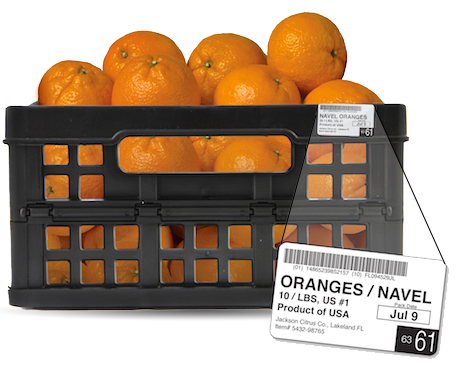What is PTI and Why is it Needed?

Photo Credit: Ward Kraft
Contaminated produce is responsible for the greatest number of individual food borne illnesses as supported by the Center for Science in the Public Interest and other studies. Among the reasons attributed to Produce’s susceptibility is fresh produce is often meant to be consumed raw, whereas when meat is properly cooked, the offending bacteria is removed.
The U.S. Food and Drug Administration noted in 2007 that fruit and vegetable-related outbreaks of food poisoning are on the rise and had struck in spinach, tomatoes, lettuce and cantaloupes. The agency urged fruit and vegetable processors to adopt food safety plans similar to those in the meat industry.
So What’s The Answer?
Produce traceability makes it possible to track produce from its point of origin to a retail location where it is purchased by consumers. Tainted produce can be removed from the marketplace, consumers warned and the reason for its occurrence can be investigated.
On July 30, 2009, congress passed HR2749 which did not specifically endorse the PTI, or prescribe a traceability method or methodology, but instead Section 107 calls for regulations establishing a tracing system that includes:
- the establishment and maintenance of lot numbers;
- a standardized format for pedigree information; and
- the use of a common nomenclature for food
The goal is to identify each person who grows, produces, manufactures, processes, packs, transports, holds, or sells food in as short a timeframe as practicable but no longer than 2 business days. The measure is pending consideration in the Senate.
And How Exactly Do I Implement PTI?
The PTI Label is an industry wide effort to track produce from the field to the grocery store. The label contains a GS1 compliant barcode and is adhered to produce cases in the grower’s field or packing shed. Industry software records the barcode and tracks the movement of produce carrying this PTI Label.
7 Milestones for PTI implementation
M1 – Obtain Company Prefix
M2 – Assign GTIN Numbers – Brand owners will assign a 14-digit Global Trade Item Number (GTIN) to every case configuration.
M3 – Provide GTIN Information to Buyers – Brand owners will provide their GTINs (and corresponding data) to their buyers.
M4 – Show Human-Readable Information on Cases – Packers are responsible for providing human-readable information on each case.
M5 – Encode Information on a Barcode – Packers are responsible for encoding the GTIN and batch/lot number in a GS1-128 barcode.
M6 – Read and Store Information on Inbound Cases – Each subsequent handler of the case will have the systems and capability to read and store the GTIN and lot number from each case of produce received.
M7 – Read and Store Information on Outbound Cases – Each subsequent handler of the case will have the system and capability to read and store GTIN and lot number from each case of produce shipped.
So What Else Do You Need to Know?
PTI Labels must be versatile enough to adhere to a variety of tough surfaces which include waxed and unwaxed cartons, plastic containers, corrugated boxes and wooden crates. They need to hold up to challenging and changing weather conditions and a mix of environments—from the grower’s field, appropriate storage conditions, transportation and distribution, right to the marketplace. There, the produce is put on shelves for consumers to put into their shopping cart before it’s served SAFELY to families on dinner tables across America.
Now that is an initiative we can all benefit from!
If you would like a partner in implementing your PTI label, please get in touch with us. We are here to help make your workday easier and more productive.

